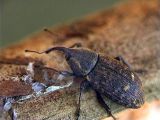Підтримуємо Вільну Україну
 We Support Free Ukraine
We Support Free Ukraine

Biodiversity Map
Taxa

-
Arthropodaphylum
Click to switch
to select orders
and filters > -
Hexapodasubphylum
Click to switch
to select orders
and filters > -
Insectaclass
Click to switch
to select orders
and filters > -
Coleopteraorder
Click to set
as the main taxon
and as a base
← of the left panel > -
Polyphagasuborder
Click to set
as the main taxon
and as a base
← of the left panel > -
Cucujiformiaseries
Click to set
as the main taxon
and as a base
← of the left panel > -
Curculionoideasuperfamily
Click to set
as the main taxon
and as a base
← of the left panel > -
Erirhinidaefamily
Click to set
as the main taxon
and as a base
← of the left panel > -
Erirhininaesubfamily
Click to set
as the main taxon
and as a base
← of the left panel > -
Erirhininitribe
Click to set
as the main taxon
and as a base
← of the left panel > -
Tournotarisgenus
Click to set
as the main taxon
and as a base
← of the left panel >
species:
Tournotaris bimaculata
PL
YES
name status: valid name
BioMap ID: 1027428
taxon code: 5268
taxonomy checked: YES
Data on distribution in Poland

Statistics
- Records: 91
- Publications: 45
- Collections: 7
- Publication authors: 44
- Illustrations (iconography): 1
- Photos (specimen/observation): 3
Taxon description
Gatunek rozmieszczony od Wysp Brytyjskich i południowych części Fennoskandii przez Europę Środkową do obszarów północnych Europy Południowej, docierający na wschód do Azji Środkowej, Mongolii, Wysp Kurylskich i Japonii; notowany poza tym z Ameryki Północnej. W Polsce rzadko spotykany, wykazywany z nielicznych stanowisk w dziesięciu krainach, przy czym informację o jego występowaniu w Sudetach Wschodnich podano 140 lat temu. Zamieszkuje doliny rzeczne, wilgotne łąki, torfowiska, rowy i pobrzeża wód. Postacie dojrzałe spotykano na roślinach od kwietnia do października. Larwy żerują i przeobrażają się w łodygach pałki szerokolistnej — Typha latifolia L.; imagines ponadto łowiono na mozdze trzcinowatej — Phalaris arundinacea L., mannach — Glyceria R. Br. i turzycach — Carex L.
Illustrations
... browse
 Tournotaris
Tournotarisbimaculata
External data sources
- Ostatnie rekordy
-
1056782
 ⊡
⊡ Erirhinidae: Tournotaris bimaculata, PL, Nizina Mazowiecka, Wilga, UTM EC24, 1992, leg. J. Siekierski
Erirhinidae: Tournotaris bimaculata, PL, Nizina Mazowiecka, Wilga, UTM EC24, 1992, leg. J. Siekierski -
1041816
 ⊡
⊡ Erirhinidae: Tournotaris bimaculata, PL, Nizina Wielkopolsko-Kujawska, lubuskie, Słubice, Słubice, UTM VU60, 2016, leg. M. Adamski
Erirhinidae: Tournotaris bimaculata, PL, Nizina Wielkopolsko-Kujawska, lubuskie, Słubice, Słubice, UTM VU60, 2016, leg. M. Adamski -
1027671
 ×
× Erirhinidae: Tournotaris bimaculata, PL, Podlasie, Biebrzański P.N., podlaskie, Biebrzański P.N., Basen Południowy buffer zone, 1996, leg. M. Wanat (Wanat 2005d)
Erirhinidae: Tournotaris bimaculata, PL, Podlasie, Biebrzański P.N., podlaskie, Biebrzański P.N., Basen Południowy buffer zone, 1996, leg. M. Wanat (Wanat 2005d) -
1024753
 ×
× Erirhinidae: Tournotaris bimaculata, 1925, coll. MiIZ PAN: Tenenbaum Sz.
Erirhinidae: Tournotaris bimaculata, 1925, coll. MiIZ PAN: Tenenbaum Sz. -
1024752
 ×
× Erirhinidae: Tournotaris bimaculata, 1908, coll. MiIZ PAN: Tenenbaum Sz.
Erirhinidae: Tournotaris bimaculata, 1908, coll. MiIZ PAN: Tenenbaum Sz. -
1024751
 ×
× Erirhinidae: Tournotaris bimaculata, coll. MiIZ PAN: Tenenbaum Sz.
Erirhinidae: Tournotaris bimaculata, coll. MiIZ PAN: Tenenbaum Sz. -
1024750
 ×
× Erirhinidae: Tournotaris bimaculata, 1934, coll. MiIZ PAN: Tenenbaum Sz.
Erirhinidae: Tournotaris bimaculata, 1934, coll. MiIZ PAN: Tenenbaum Sz. -
1024749
 ×
× Erirhinidae: Tournotaris bimaculata, 1934, coll. MiIZ PAN: Tenenbaum Sz.
Erirhinidae: Tournotaris bimaculata, 1934, coll. MiIZ PAN: Tenenbaum Sz. -
1024748
 ×
× Erirhinidae: Tournotaris bimaculata, 1934, coll. MiIZ PAN: Tenenbaum Sz.
Erirhinidae: Tournotaris bimaculata, 1934, coll. MiIZ PAN: Tenenbaum Sz. -
1024747
 ×
× Erirhinidae: Tournotaris bimaculata, Mielnica, 1938, coll. MiIZ PAN: Tenenbaum Sz.
Erirhinidae: Tournotaris bimaculata, Mielnica, 1938, coll. MiIZ PAN: Tenenbaum Sz. - ... more
- Powiązane publikacje
-
Mazur M.A. 2011c. Weevils (Coleoptera: Curculionoidea) of the Stobrawski Landscape Park. Pol. Pismo Ent., 80(2):321-342.
 full text
full text Show records
Show records -
Gutowski J.M., Kubisz D., Sućko K., Zub K. 2010b. Sukcesja saproksylicznych chrząszczy (Coleoptera) na powierzchniach pohuraganowych w drzewostanach sosnowych Puszczy Piskiej. Leś. Pr. Bad., 71:279-298.
 Show records
Show records -
Wanat M. 2005d. Ryjkowce (Coleoptera: Curculionoidea bez Scolytinae) Biebrzańskiego Parku Narodowego i jego otuliny. [In:] Dyrcz A., Werpachowski C. (Eds.) Przyroda Biebrzańskiego Parku Narodowego. Osowiec Twierdza. pp. 301-324.
 Show records
Show records -
Łętowski J., Gosik R., Staniec B., Czarniawski W. 2001b. Ryjkowcowate (Curculionidea: Rhinomaceridae, Attelabidae, Apionidae, Curculionidae) wybranych zespołów roślinnych Nadwieprzańskiego Parku Krajobrazowego. Parki Nar. Rez. Przyr., 20(4):47-66.
 Show records
Show records -
Łętowski J., Gosik R., Staniec B. 2001a. Materiały do znajomości ryjkowcowatych (Curculionoidea: Rhinomaceridae, Attelabidae, Apionidae, Curculionidae) Poleskiego Parku Narodowego. Roczn. Nauk. PTOP „Salamandra”, 5:43-60.
 Show records
Show records - ... more
- Powiązane zbiory
-
Białooki P.*
 Show records
Show records -
ISEZ PAN
 Show records
Show records -
MiIZ PAN: Tenenbaum Sz.
 Show records
Show records -
Muz. Górnośląskie, Bytom: Mączyński
 Show records
Show records -
Wanat M.*
 Show records
Show records - ... more
- Wykaz powiązanych pozycji
-
Curculionoidea of Poland
 Show records
Show records








